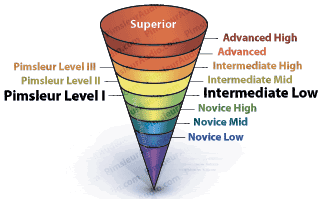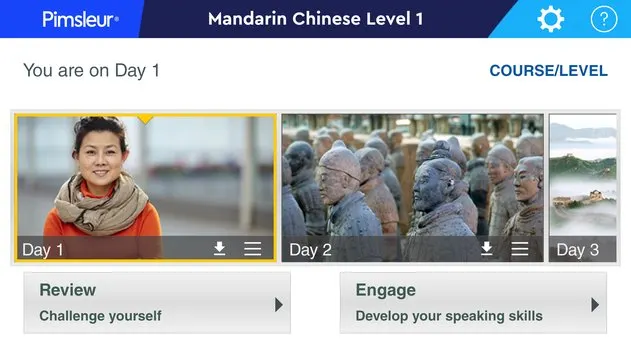- Best LinkedIn Learning Courses (Lynda Courses) - March 31, 2020
- EdX vs Coursera: Which is the Better Online Platform? - March 24, 2020
- Best Online Bookkeeping Courses Worth Taking - March 24, 2020
They both claim to be able to get you to speak a language quickly using tried and tested methods, and both are formidable names in autodidactic language learning.
Much like our article comparing Rosetta Stone to Duolingo however, the question remains whether or not it is necessary to spend a substantial amount of money on a learning system at all.
Depending on your learning style, one might simply be the better option over the other, and the real problem is that each course sells itself as the be all and end all. That’s why we are here to check what course fits whom and what the pros and cons of each system are when compared with another.
Bottom Line Up Front: If you thrive on structure and want a PROVEN method for language learning, I personally prefer Pimsleur here. Duolingo isn’t a BAD choice, but the modules and new languages seem a bit “thrown together” when compared to Pimsleur’s tried and true rigor (Pimsleur also provides access to MORE languages).
Main Differences Between Duolingo vs Pimsleur
The main differences between Duolingo and Pimsleur are:
- Duolingo has a completely free to use version, whereas Pimsleur only has paid versions
- Pimsleur focuses more directly on oral language learning, whereas Duolingo is more broadly focused on language learning
- Duolingo offers gamification of their lessons, whereas Pimsleur does not offer gamification
The general idea

Fundamentally, Pimsleur and Duolingo share the same goal: both want to teach the basics of a language to absolute beginners with methods that save time and effort. You don’t have to endlessly memorize vocabulary and you learn grammar intuitively through the use of your chosen language. Most importantly perhaps, you can learn on the go and fill otherwise “empty” time like your commute or the wait at the DMV with something useful.
While Duolingo uses an app and Pimsleur works with an mp3 course only, the basic approach is very similar: you memorize a complete sentence in different ways, taking it apart and putting it back together. This way both courses hope to drill several things at once, namely sentence structure, vocabulary, and grammar in use.
You will learn how to construct the most commonly used sentences. These include things such as describing and ordering food, telling someone about your family and where you come from, asking for directions and describing the weather.
In order to get you to achieve this, both courses lean heavily on spaced repetition, as do most approaches to language learning, actually: the idea is that you repeat words and sentences long enough to add them to your short-term memory, before they enter your long-term memory by “reappearing” after certain periods of time.
The biggest differences
On its website, Pimsleur bears down hard on the “mindless repetition of comparable services and promises a much more natural and intuitive way to learning a language.
Unfortunately, or fortunately, depending on what side of the fence you end up on, as mentioned above, Pimsleur offers much the same method as Duolingo under a different name – for all of these courses, repetition is an undeniable and undeniably large part of everything you do.
The main difference is the order in which you learn something. Pimsleur starts by playing you a full dialogue. This can be a greeting or a food order, for example. Then it will take each sentence apart and teach you every single word of it until you can understand and repeat the sentence in its entirety. It gives you small building blocks that are useful in many different conversations.
Duolingo will start with similar material but expects you to intuitively understand a lot. It will never just show you a single word, but always have you do the heavy lifting– whether it’s by picking the right translation out of multiple options, writing a sentence or pairing up words and their translations in your native language. Often you establish the meaning of a word by getting it wrong first. You are encouraged to guess, which can at first seem counterintuitive because just being told what a word means at the beginning could speed up the process of learning quite a lot. Instead of being shown a full sentence, you learn its components first – this approach is exactly the opposite of Pimsleur.
There are several reasons for this, all due to a core difference between Duolingo and Pimsleur: Pimsleur only wants to get you to speak, while for Duolingo, speaking is very low to nonexistent on the list of priorities.
The Pimsleur Method
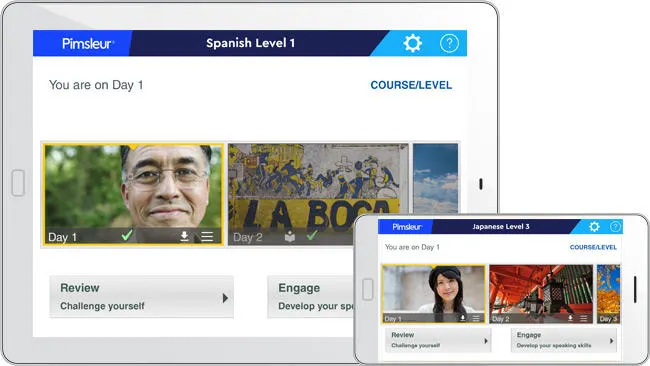
The Pimsleur Method is the trademarked language learning method based on the achievements by Dr. Paul Pimsleur, distributed by book publisher Simon&Schuster since 1995, just three short years after Rosetta Stone was first released.
It has been around for a long time and has always marketed prompting learners to speak as the most efficient way to learn a language. Just like when you were a kid, listening and trying to repeat what is said to you comes first, after that you learn to read and write (assumingly using another program, since Pimsleur offers no options for that). Thus the quickest way to learn according to Pimsleur is to let go of a few things. In exchange, it claims to be able to teach you how to speak a language in no more than 30 days.
Pimsleur is available in an impressive 50 languages; some of these are dialects, such as Swiss German and Brazilian Portuguese. Additionally, Pimsleur offers English for Students of Other Languages (ESL). All of the other courses use English as the starting language.
While the Pimsleur mp3s are available through different retailers such as Amazon’s Audible, like most courses that come at a price, Pimsleur offers downloads through its own website. There are five levels in total to each language; each level contains 30 lessons of 30 minutes each.
Pimsleur charges you $107.95 per level or $484 for the whole five-level set for new customers. Returning customers pay 119.95 for additional levels. Each level contains in theory 15 hours of material. The complete course thus comes down to 75 hours of material, though it’s hard to say how much of it is unique and how much is just the (albeit necessary) repetition.
Not to detract from the effort that must go into 75 hours of content, but for this amount of money, you may likely expect Pimsleur to cover more ground in a lesson than it does, more on that further down.
Each lesson is hosted by a speaker who will provide translations and regularly ask you to participate. This is a nice change to both Duolingo and Rosetta Stone, as you are given translations right away and even a grammatical explanation or two, at least at the very beginning.

The problem with Pimsleur’s Idea of Communication
In the beginning, efforts will be made to explain basic grammar, but the explanations are often wrong or overly simple.
In the first lesson of the Pimsleur Classic Course Japanese, which was used for this review, you are literally told: “In a sentence, you need to use words with ‘ga’”. This is a very basic way of saying that the particle “ga” indicates the object of the sentence. It’s particularly bad luck that in a not inconsiderable number of cases, “wa” does exactly the same.
At some point, Pimsleur will give up explaining the use of particles altogether and just present you with fixed expressions. Pimsleur is only interested in direct translation, not necessarily in your ability to develop any grammatical understanding.
There is one error in the “learn a language like your native language” reasoning, which is that as children, we learned through immersion and had no other language to go by. If we made a grammatical mistake, there was always someone there to correct us, if we pointed out something, our parents would tell us the word. At no point during your childhood, we learn our native language using words only, and our brains have not been wired to use another language as a crutch to make sense of what we are presented with.
Simply speaking, we don’t have our childhood brains anymore, and even if we did, listening alone would not teach us our language.
The positive aspects of Pimsleur’s approach to communication
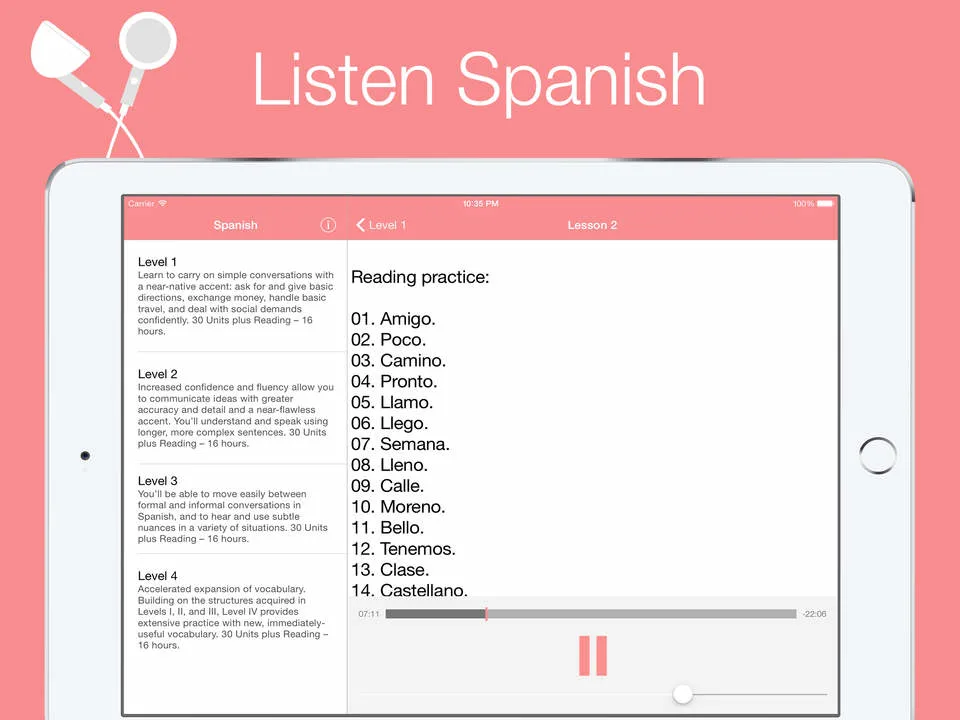
Full immersion without the pesky grammar is an approach many polyglots who travel the world swear by. Many describe it as the best way to learn a language, and Pimsleur mimics that idea while still taking you by the hand occasionally through the English-speaking host. Depending on the language, you can be fairly certain any language learner will have to look something up at some point or other, but Pimsleur is very motivating due to the quick results it produces.
In just 30 minutes you will be able to say your first few sentences. You will also have taken on the biggest hurdle of language learning for many: since Pimsleur forces you to speak in order to remember words and train your pronunciation, you overcome the fear of embarrassment that holds many people back. It’s very much a dry run for your first normal conversation, especially since Pimsleur asks you to repeat sentences and put your knowledge to work quickly to mimic the flow of everyday dialogue.
Another surprisingly effective approach is teaching each new word very slowly, syllable by syllable, starting at the end of the word. The speaker on the course will say the complete word first, then start with the last syllable and work their way to the beginning of the word before repeating it again.
It takes time to get used to at first, but once you get used to it you’ll find that it really helps to make the words stick.
Comparing the Duolingo and Pimsleur experience
Comparing Duolingo and Pimsleur is difficult because they use different ways to achieve the same goal. If you simply don’t enjoy audio lessons, Pimsleur likely isn’t going to change your mind. However, the method itself has several advantages and disadvantages when compared to another course, in this case, Duolingo.
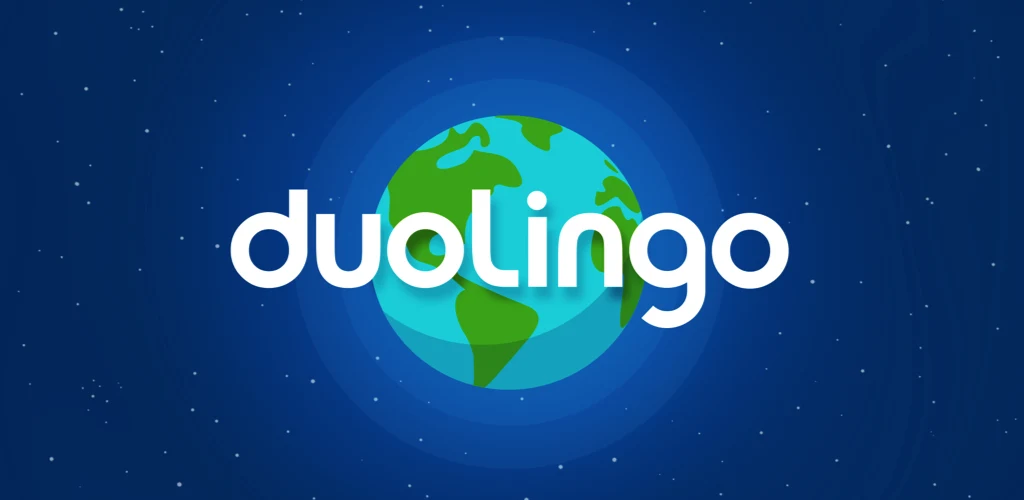
As previously mentioned, Pimsleur’s biggest strength is possibly Duolingo’s greatest weakness. Duolingo makes you read and listen, but you rarely ever have to speak the target language. Pimsleur makes you speak immediately and at regular intervals, stressing how important it is to actually say the words rather than to repeat them in your head. This makes Pimsleur awkward to use in public, but it’s also what makes it exhilarating to use. There’s nothing quite like actually speaking a foreign language after all.
How well Duolingo stacks up to that depends on the language you’re learning. As a crowdsourced course, the content can vary from language to language. In some language courses, you will have more opportunities to write sentences, others teach you more grammar.
Generally, Duolingo feels like the better choice for languages with non-Roman alphabets since it’s mainly dependent on reading. Being able to immediately speak a language is great, but being able to at least read signs is going to be invaluable even if you just want to become proficient enough for a short holiday.
Immediately having to answer or repeat what you just heard the way you do in Pimsleur uncovers an aspect Duolingo could improve on: you can always take your time answering, whereas it feels more like you know the answer to a translation or word order task when you have little time to think about it.
For all that Pimsleur slams monotone and unnecessary repetition, there is a lot of it. Particularly since it’s an audio course and you can skip absolutely nothing, seeing you don’t want to miss anything and allow for the right amount of time your brain needs for memorization, Pimsleur quickly becomes the very thing it accuses everyone else of.
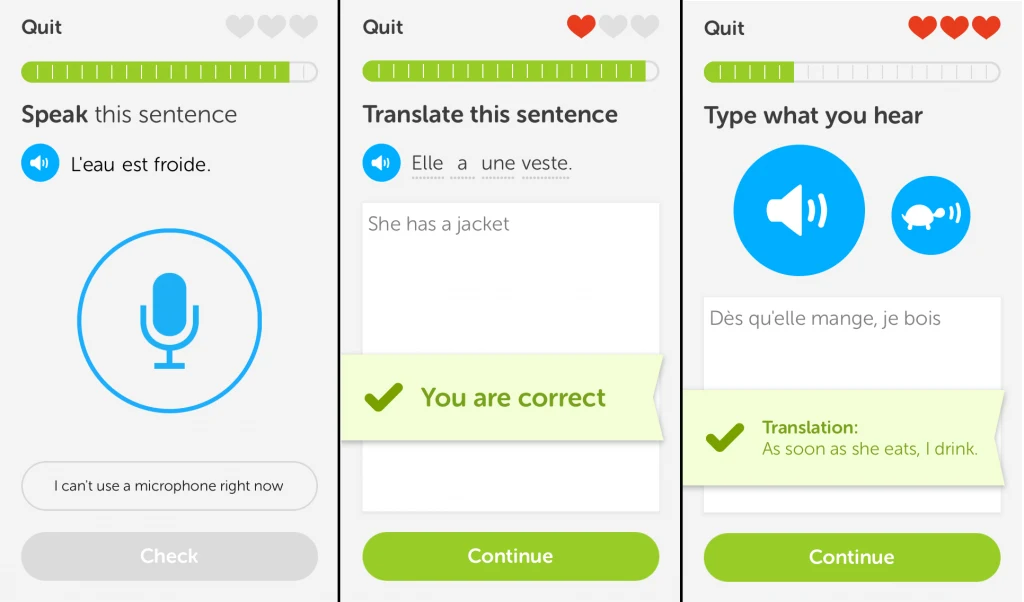
Granted, it is difficult to determine whether Pimsleur or Duolingo is working better, as that depends on your personal engagement with each course (and how many levels of Pimsleur you’re willing to pay for). It’s simply not possible to say whether you have learned the same amount of content in 30 hours with Duolingo as you do in 30 hours of listening to Pimsleur. Another reason for this is that by looking at writing, your brain has to expend further energy trying to remember how something is spelled.
It definitely feels like there is more variety to Duolingo overall, which of course makes things more difficult to remember. Between the different types of tasks, new vocabulary that Duolingo tends to drop without easing you in first and regular motivation, there is a lot going on.
That’s great if you’re actually able to remember it all. Duolingo is definitely more fun and doesn’t require your undivided attention at all times, but this, according to Pimsleur, is exactly why you don’t remember much by the end of it. It’s an argument that makes a lot of sense.
Pimsleur limits the amount of knowledge you can gain quite drastically. In each 30-minute session, you learn only a handful of new words. Like we said further up, the first impulse is to expect Pimsleur to cover more ground. Instead, the course is supposed to make sure that you don’t forget what you’ve just picked up, resulting in its often glacial speed.
This approach leads to a very rigid learning experience. You learn how to reproduce exactly the conversation and answer exactly the questions Pimsleur gives you, but nothing else. Since you don’t know the grammar and conversations stay very basic, it needs a lot of additional effort to work out how to use what you’ve just learned in a different context.
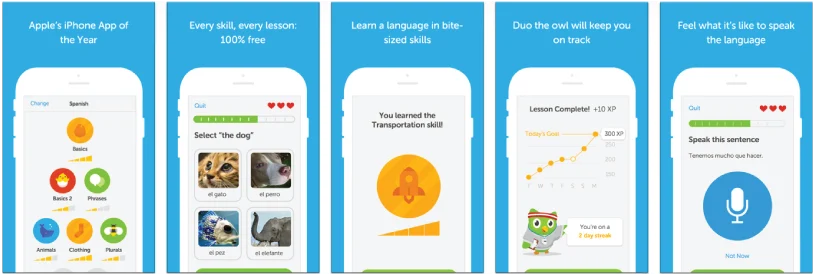
Unfortunately, Duolingo’s solution to this problem isn’t much better: it often abandons context altogether so you can focus on a certain grammatical point of a piece of vocabulary. Where Pimsleur is too rigid, Duolingo may leave you on your own too often.
Yet, Pimsleur takes care that you don’t “overdo” it – the gamified approach of Duolingo can be addictive fun, it’s purposefully designed that way. However, this means that you might want to go back for just one more lesson. By accidentally overtaxing your brain with new information, you learn less in the long run.
The structure Pimsleur forces on you as part of its scientific approach is very helpful. It’s easy to understand and retrace your own progress and you feel the impact of each new carefully introduced addition immediately. By comparison, learning with Duolingo can feel quite chaotic. If you don’t revisit previously learned items you may never see them again and often there is no strong sense of building upon what you already know in any calculated fashion whatsoever.
This is due to Duolingo simply not having one unified approach. Every course uses the Duolingo learning methods a little differently, for example by having you repeat certain tasks with higher frequency than others. Popular languages may include a larger variety of content and so on. The Pimsleur Method works the same way for every language. That comes with its own challenges, as it doesn’t allow for cultural differences, but you know what you get at all times.
While Pimsleur has been around successfully for decades, its approach may seem a little inflexible when compared to the competition. As an online service and app, Duolingo can adapt. New content is added on a regular basis, errors are ironed out thanks to the community effort that goes into the service and there is an ongoing commitment to adding new functionalities.
To make all of this possible, Duolingo has increased the number of ads in its product significantly of the past few months. The $12.99 subscription fee for an ad-free premium version is still very easy to agree to if you consider the price of just one level of Pimsleur.
As usual, it’s important to remember that both courses work best when you use them as an addition to something else if you’re committed to learning a language. Duolingo’s lessons rarely even take 20 minutes a day even when you commit to the highest possible daily goal.
Similarly, the mix of listening to phrases and repeating them for 30 minutes is a very small commitment you can easily pad out with a bit of additional reading. Pimsleur would feel instantly more useful with transcripts, for example. In the interest of giving your brain enough time to process what you’ve learned, you can finish listening to a lesson, take a break and then maybe find a similar conversation in written form.
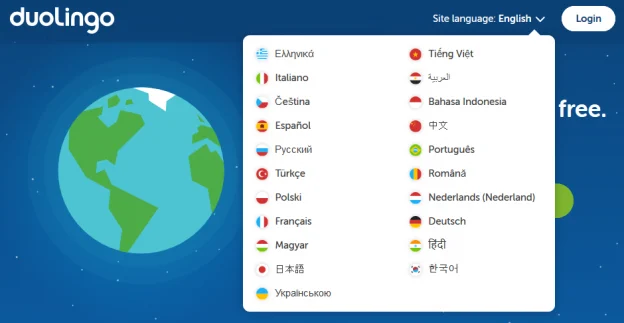
Not everything you learn is useful. This is a complaint that once again applies to both Duolingo and Pimsleur. Like most language learning courses assume that you’re going to invite someone over to visit you at your house or describe your family situation. These are perhaps remnants from learning your first foreign language in high school, as an adult we tend to describe other things in our first few conversations with someone.
As with Rosetta Stone, for many people, Pimsleur’s price is likely its biggest drawback. If you compare the efficiency of Duolingo, a completely free product, to Pimsleur, Duolingo comes away looking pretty good, especially since despite the largely different approach, both courses have more in common than you might think.
Pimsleur
| Pros | Cons |
| Beginner-friendly approach | High price |
| Gets you to speak immediately | Teaches very little grammar |
| A structured approach that makes remembering content easy | Repetitive and often slow |
| Immediately teaches you natural pronunciation | Audio-only method teaches no reading skills |
| 50 languages to choose from | |
Duolingo
| Pros | Cons |
| Good for absolute beginners | Heavy focus on the most popular languages |
| Completely free | Unstructured approach can feel chaotic |
| Courses available for non-English speakers | Teaches very little speaking |
| Content grows and evolves |
Bottom Line: If you thrive on structure and want a PROVEN method for language learning, I personally prefer Pimsleur here. Duolingo isn’t a BAD choice, but the modules and new languages seem a bit “thrown together” when compared to Pimsleur’s tried and true rigor (Pimsleur also provides access to MORE languages).


